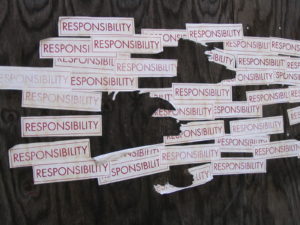
Working with the public every day provides an education that you just can’t get anywhere else. Serving retail customers is an experience. Every interaction with a customer determines if they will buy your product or service the first time and if they would buy from your company again.
Frontline service people face challenging interactions with customers in person, on the phone and through emails. The most effective have great interpersonal skills as the primary skill sets with product knowledge coming in a close second. Naturally, due to the varied circumstances they encounter, frontline leaders have to be armed with verbal strategies. Their experience and talent in handling all kinds of situations make the difference in cultivating high levels of customer satisfaction.
A rule to remember is: A customer is there to be served not to be sold.
Attracting then retaining customers is a challenge for any business. Customers are smarter and have many more options than ever before. They are there to be served, and sometimes things go wrong. The product doesn’t do what it’s supposed to, delivery time was off, dirty handprints and who knows what else can go wrong. Tempers flair and the customer isn’t happy so it’s up to you to solve the problem.
When a customer is unhappy and you are the person on the frontline, consider these ideas to help turn a mad customer into a happy one!
1. Put Yourself in Your Customer’s Shoes.
- A customer may be angry and verbally slinging mud but it’s your job to recognize where the anger is coming from. Do not take the customer’s anger personally. I know, it’s easy to say but it has to be done.
- Treat this situation knowing that your goal is to help the customer. You are there to be of service.

- The situation is not to see who is verbally stronger. It’s not an arm wrestling match. It’s a time to offer practical ways to solve the problem but you first have to help your customer “hear” you.
2. Remain Calm
- A big mistake is to engage the customer in a heated debate of who’s at fault. It’s not an arm wrestling contest. By lowering your voice and practicing patience, you are sending a subconscious signal that the conversation will not get out of hand.
- It’s important to look them in the eye to establish real contact. Once this is done, you can begin to determine what the root issues are by asking good questions and listening closely. Make notes on a pad to further keep track of the issues at hand.
3. Move the Conversation to a Private Area (if warranted)
- If the customer is very loud or out of control, it’s best to move the conversation away from a busy counter or area populated with customers.
- Telephone customers require a different approach just like an email customer. The first goal is to get the customer on the phone and follow much of the same general approach as you would in person. Remember, people are much stronger on the phone or in an email. Listen for the right clues to respond because you don’t want to get caught up with all the emotions of the situation.
- Sometimes the customer just needs to vent. You don’t want to expose this to all your customers. Ask them to follow you, then walk to the door, but don’t look back. Nearly all “angry” customers will follow your lead if done correctly and you are showing the right customer care attitude. Take charge of the situation without being inconsiderate.
 4. Listen Carefully With Both Ears
4. Listen Carefully With Both Ears
- This is the most important step in the process. The customer is angry and wants to be heard.
- Eliminate any distractions. Don’t check your email and for goodness sakes turn off the ringer on your phone. Let your receptionist know you are in an important customer meeting and to not disturb you.
- Listen to understand the situation.
- Instead of talking, nod your head that you understand what is being said. Let the customer know you are concerned and will take their complaint seriously.
5. Restate Their Concerns
- Repeat the customer’s concerns back to him or her so there is no misunderstanding. Speak slowly and clearly. If you have to ask a question, avoid open-ended questions that allow the customer to continue to vent or escalate the situation. Stick to simple Yes or No questions.
- Take notes. As you collect the topics, restate them to the customer that you have heard it right. By repeating the customer’s issues back to them diffuses the anger from someone who wants to be heard. Restate and summarize so you both are clear.
 6. Don’t Be “Pass the Buck Joe”
6. Don’t Be “Pass the Buck Joe”
- Don’t make any negative comments about other employees or departments. This only serves to make your whole organization look bad. Keep your thoughts to yourself and deal with them through the proper channels.
7. Apologize, If Necessary
- If you, or the company, are at fault – apologize. Own the problem and be sincere. Even if you are not at fault, an apology for the situation goes a long way with most customers.
- Sincerity is a key trait to display. Don’t make a false apology. That only leads to more frustrations.
- Don’t use the words if you can’t convey the meaning. If they sense this, they will leave you with the perception that they are satisfied, but then will never do business with you again. Your goal is to make the customer happy and to keep them coming back.
8. Offer a Solution
- Offer a solution to the customer’s problem. If you have to adhere to company policy, explain it in “customer language” not technical terms or lingo you use in the business.
- Look for ways to work around the problem that’s good for your customer and your business. Be creative in your problem-solving efforts, but keep in mind that you are in business and any offer should be fair for the business and the customer.
- The solution may not make the customer happy, but the customer can come away satisfied when they know you did everything in your power to rectify the situation.
- If you ask them what they think is fair before offering your solutions, many times their solution would be easier or less costly than the one you were going to offer.
9. Follow Up With the 24-Hour Rule
- After the situation is resolved, call the customer within 24 hours to follow up and make sure the situation is resolved and they are satisfied.
- A handwritten note is often an overlooked method of follow up that creates real impact for the customer. An email will work fine just make sure it’s sincere and well written. Short and to the point.
- To cement the bond with the customer, call back again in 48 hours and restate your sincere interest in the customer and their business. Statistically, most sales organizations don’t follow up like this and when you do it increases customer satisfaction immensely.
10. Get Feedback
- While you’re on the call, ask if you could have handled anything differently. Let them know you value them as a customer and want to provide only the very best service to your customers. It would be rare to ask for a referral at this time, but if the relationship is right, go for it.
The goal is to create a customer for life.
What would you add to this list?

